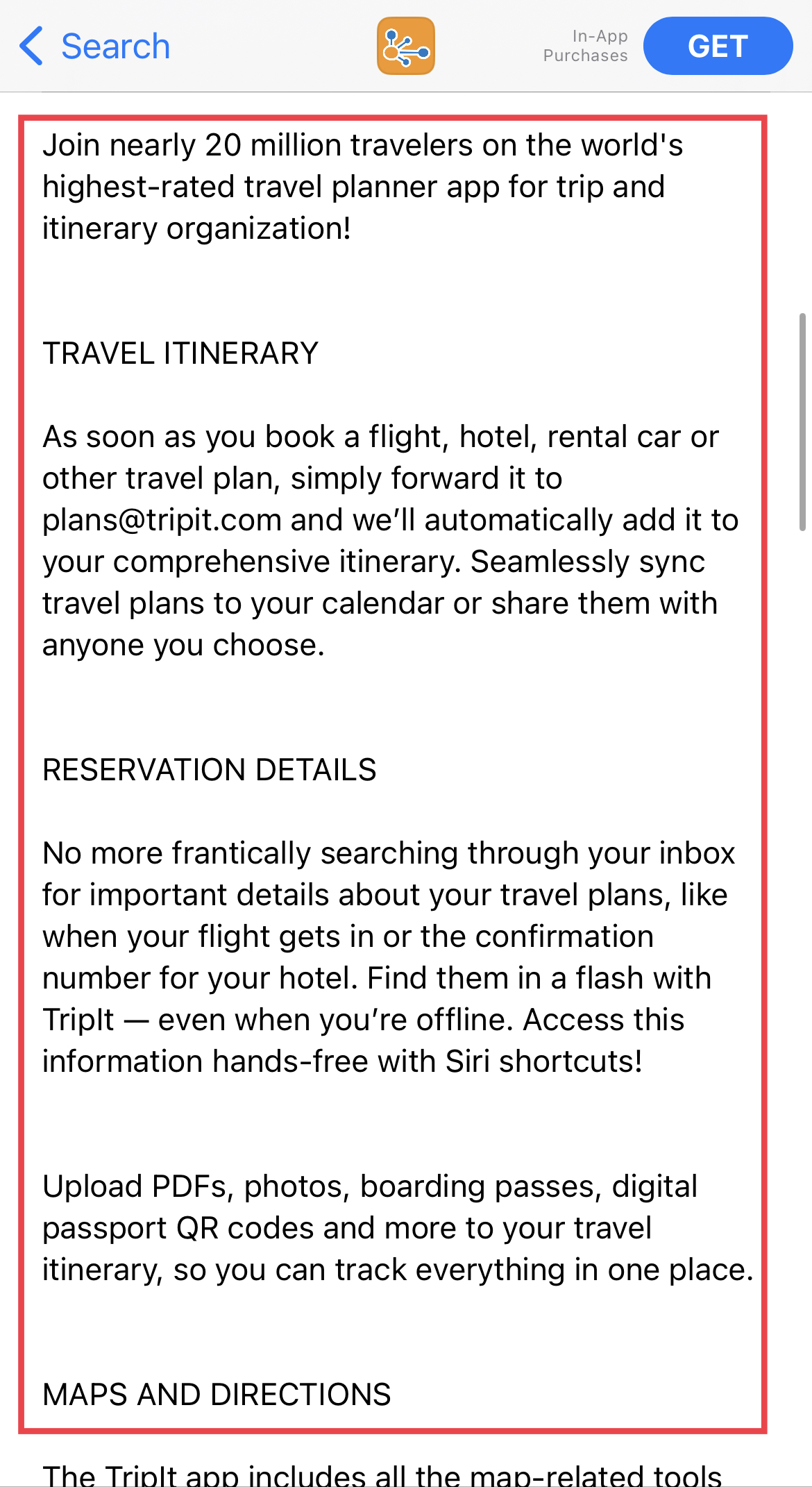
Finding the Right Rhythm in ASO with Musixmatch
Posted on March 27th, 2025
This week, we explore how Musixmatch can update its ASO strategy to improve App Store search rankings, enhance visuals, and drive more downloads.

With travel season in full swing, developers everywhere are looking for ways to attract travelers to their platforms in hopes of becoming their go-to app for organizing trips. But it takes more than just a feature-packed itinerary helper to grow on the app store. This is where App Store Optimization comes into play.
App Store Optimization acts as the foundation for app store marketing, covering different elements that affect rankings and conversion rates. In this App Store Spotlight, we’ll analyze TripIt’s current app listing and identify what its developers are doing well and what they can improve upon.
An effective app icon strikes a balance between standing out among search results and briefly informing users about what they can expect from the app before reaching the product page. Representative symbolism, well-known logos, and simplistic imagery all help to create an app icon optimized to aid in drawing attention.
TripIt’s current app icon uses imagery that seems to illustrate a network stemming from a central point. While this aligns with the brand’s logo online it doesn’t hint at a service dedicated to itinerary planning or flight tracking. By just looking at the logo, users would most likely not associate it with anything related to travel. A good step would be to consider adapting the logo to add symbols or icons that relate to its core feature set.

Read more app icon optimization tips
Your app subtitle serves as a tremendous opportunity to include keywords that help your app rank higher. Ideally, you’ll include the terms that are most important to your keyword targeting objectives. These terms should also align with what potential users are most likely searching for. For example, if the keyword “flight tracker” is popular among users and relates to your features, you may want to consider including it in your subtitle.
Currently, TripIt’s subtitle contains the keywords “trip itinerary” and “alerts”. However, only one of those is closely related to the app itself. “Alerts” is too broad of a search term to significantly aid TripIt in ranking higher in search results. A better term may be “travel alerts”, “flight tracker”, or similar terms that reflect the app’s core features.

Read more app subtitle optimization tips.
An optimized app store description effectively communicates the intricacies of your app in a detailed, yet easily consumable manner. Balancing a thorough explanation of app features with an easy-to-read text structure keeps users engaged and enhances your chances of achieving a download.
In TripIt’s case, their app description ticks the boxes of optimized structure for readability, spacing out information in short blocks of text instead of long paragraphs. This helps get app information across without boring the reader and equally dividing the text in sections that help explain specific features.

Read more app description optimization tips.
When it comes to optimizing a travel planner app, developers can follow the tried and tested App Store Optimization strategies to improve their app ranking and conversion rate. From your app icon and app subtitle to your app description, there are several elements of your app listing that can be optimized to spark app growth now and in the long run.
Need help with your App Store Optimization? Get in touch with Gummicube today.

This week, we explore how Musixmatch can update its ASO strategy to improve App Store search rankings, enhance visuals, and drive more downloads.

Discover how 23andMe can enhance its App Store presence with strategic ASO tweaks, and learn key ASO tips to boost visibility and conversion rates.

This App Store Spotlight on theScore explores title, subtitle, and screenshot optimizations to boost visibility and conversions during March Madness and beyond.